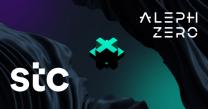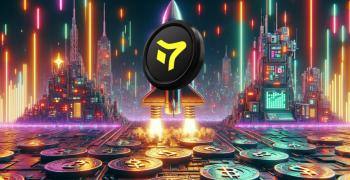![Energy Web Foundation’s Clean, Green, Energy Blockchain Platform [Interview]](https://cryptoslate.com/wp-content/themes/cryptoslate-2020/imgresize/timthumb.php?src=https://cryptoslate.com/wp-content/uploads/2018/12/grid-singularity-interview-cover.jpg&w=70&h=37&q=75) Energy Web Foundation’s Clean, Green, Energy Blockchain Platform [Interview]
Energy Web Foundation’s Clean, Green, Energy Blockchain Platform [Interview] Energy Web Foundation’s Clean, Green, Energy Blockchain Platform [Interview]
![Energy Web Foundation’s Clean, Green, Energy Blockchain Platform [Interview]](https://cryptoslate.com/wp-content/themes/cryptoslate-2020/imgresize/timthumb.php?src=https://cryptoslate.com/wp-content/uploads/2018/12/grid-singularity-interview-cover.jpg&w=700&h=368&q=75)
Cover art/illustration via CryptoSlate. Image includes combined content which may include AI-generated content.
Prior to the launch of Ethereum, a faction of its principal founders banded together with seasoned policy professionals, energy sector executives, and academics to explore meaningful use cases for blockchain in energy, a sector they concluded could benefit from the nascent technology.
Dr. Ana Trbovich, Co-Founder and COO of this long-lasting alliance, Grid Singularity, explained to CryptoSlate in an interview during the Malta Blockchain Summit on how her decentralized energy project was planning to bring to develop a smart, green, and distributed global energy ecosystem.
“Not a Typical Startup”
For Berlin-based Grid Singularity, decentralization is the next step for energy.
In a market where renewable, distributed systems of production, microgrids, and peer-to-peer trading are poised to supplant industrial-grade, centralized energy generation, Trbovich explained that her team figured out early that blockchain was the answer:
“Decentralization is essential because it empowers consumers with enhanced choices of how they use electricity and their private data.”

As the 2016’s proliferation of early dApp projects began to take hold, however, Grid Singularity concluded that no blockchain was yet equipped to deliver their envisioned distributed energy data exchange ecosystem. Furthermore, there was concern that they could be left waiting years for the “appropriate core technology” to roll along. Even in 2018, Trbovich maintains the bulk of blockchain projects remain stuck in the proof-of-concept stage as a result.
Yet it was this technological gridlock, she explained, that gave rise to Grid Singularity’s existential mission: to build the very technology it believed companies would need to “come to commercialization sooner” and use blockchain to revolutionize the energy sector.
Partnering with Rocky Mountain Institute in 2016, a US nonprofit promoting renewable energy and sustainability, Grid Singularity co-founded the Energy Web Foundation (EWF) in Switzerland in January 2017 and started work on the Energy Web Chain—an open-source blockchain “specifically designed for the energy sector’s regulatory, operational, and market needs.”
And with core Grid Singularity founders consisting of Ethereum co-founders Gavin Wood, Jutta Steiner, Aeron Buchanan, and a team of other talented blockchain developers and energy engineers, Grid Singularity appears to have hit the ground running in its mission to build “the one” dApp platform for energy.
Europe: The World’s New Silicon Valley?
Two years on, the Energy Web Foundation would seem decidedly close to entering the market.
With a live Proof-of-Authority, Parity Client-based test blockchain network, Trbovich maintains that the project’s mainnet “open, decentralized energy data exchange platform” will benefit the market with a number of commercial applications when it launches in mid-2019.
Both startups and “innovative incumbent corporates”, like Singapore Power, are using the Energy Web Chain, with a number of other startups and utilities, mostly clustered in Europe, building a diverse range of dApps including renewable energies certification and trading, shared charging for electric vehicles, demand flexibility, home-management applications, and billing,” Trbovich said.
But whatever impact Trbovich (also a board member at a leading EU institution for fostering technological innovation, the European Institute of Innovation and Technology) believes the project will have on the market, she seems to think it will be some time before regulators give approval to the project’s “most exciting” use case, peer-to-peer energy trading. As stated during the interview:
“It’s understandable that the regulators want to make sure that energy is provided and traded safely. It will take a while some time to put the legal and the technical ingredients together for the most creative disruption of blockchain.”

“A number of governments are using regulatory sandboxes to test what appears to be a radical shift to peer-to-peer energy markets,” Trbovich said. However, she has her money on Europe as the future leader of innovation in energy blockchain space—not only as a continent with a “culture of supporting clean, green tech,” but as the stomping ground of core Ethereum developers.

































































